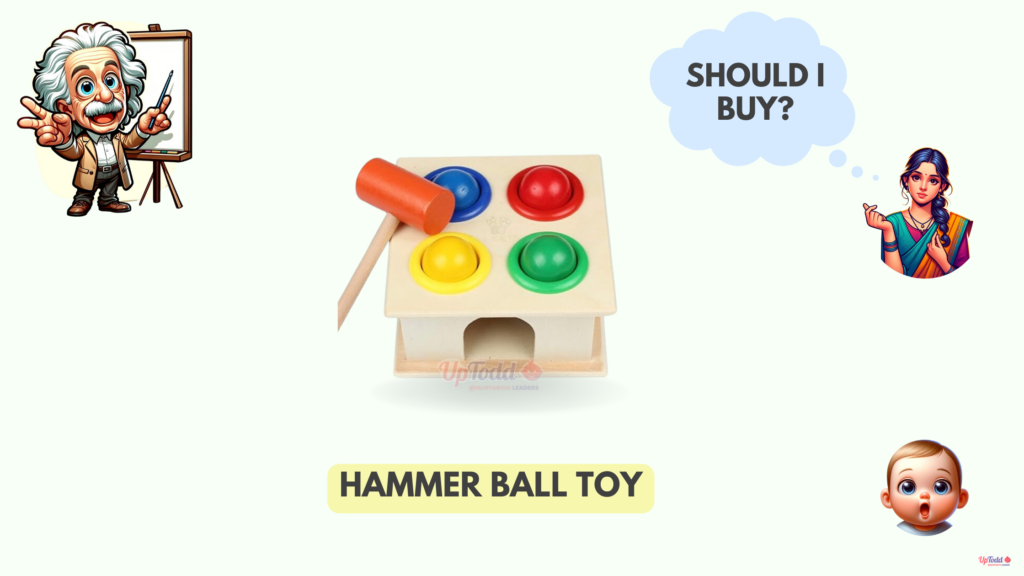
Welcome to our exploration of the Hammer Ball Toy. In this blog post, we’ll take a closer look at this engaging toy, uncovering its benefits and potential drawbacks. Guided by the insights of the “Einstein Growth Guru,” we’ll examine the advantages and drawbacks associated with this engaging toy, aiding you in understanding its role in your child’s playtime.

Pros of the Hammer Ball Toy
Hand-Eye Coordination
The Hammer Ball Toy provides an excellent opportunity for children to develop hand-eye coordination. As they aim the hammer to strike the balls into the holes, they engage in precise movements, enhancing coordination and motor skills.
Teaches Cause and Effect
With its interactive design, the Hammer Ball Toy teaches children about cause and effect relationships. When they strike the balls with the hammer, they observe the immediate consequence of the balls popping out or moving through the maze, fostering understanding of cause and effect concepts.
Fine Motor Skills Development
Engaging with the hammer requires fine motor skills such as grasping the hammer and manipulating the balls. Children practice precise movements and hand-eye coordination as they hold and maneuver the hammer to strike the balls, strengthening hand muscles and improving dexterity.
Cons of the Hammer Ball Toy
Limited Cognitive Stimulation
While this toy offers opportunities for physical activity and cause-and-effect learning, it may have limited cognitive stimulation compared to other toys. The repetitive nature of hammering balls into holes may offer fewer opportunities for complex cognitive engagement and problem-solving.
Aggressive Play
Some children may engage in aggressive play with this toy, using excessive force when striking the balls with the hammer. This aggressive behavior may pose safety risks to other children or objects in the play environment, requiring supervision and guidance from caregivers.
Lack of Creativity or Imagination
While this toy provides a structured activity, it may lack opportunities for imaginative play or creative exploration. Unlike open-ended toys that encourage children to invent stories or scenarios, the hammering activity may offer limited scope for imaginative expression.
Age Recommendations
Recommended for children aged 2 to 5 years, the hammer ball toy is typically made from durable materials such as wood. Caregivers should ensure the toy meets safety standards and supervise play sessions to prevent accidents or injuries.
Final Thoughts
In conclusion, the Hammer Ball Toy offers valuable opportunities for hand-eye coordination, cause-and-effect learning, and fine motor skills development. Despite its benefits, caregivers should be mindful of potential drawbacks, including limited cognitive stimulation, the risk of aggressive play, and the lack of creativity or imaginative expression. By understanding both the advantages and limitations of the Hammer Ball Toy, parents can provide enriching play experiences that support their child’s holistic development.
Thank you for joining us on this exploration of this amazing toy. May your child’s playtime be filled with learning, discovery, and moments of joy!
Explore UpTodd luminary pathway to unleash hidden abilities of the baby.
Check out this link- https://youtube.com/shorts/UoClXrMWP_s
